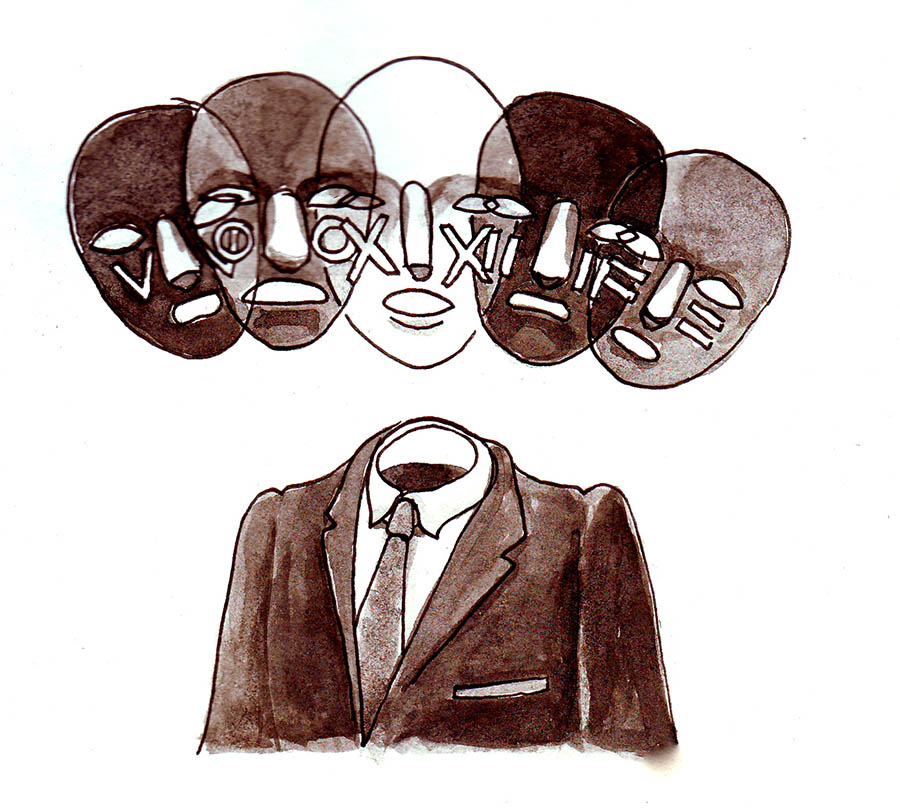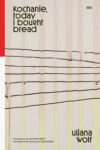
On his Monticello, Virginia plantation at the turn of the 19th century Thomas Jefferson was his own kind of god, and he, like Zeus, was tempted to illicit love. Jefferson threw his reservations and color prejudices to the wind and spawned six octoroon children with Sally Hemings, his quadroon slave mistress. Those children, born into slavery, passed as white and assimilated into European-American culture upon their manumission. One bastard son, it is recalled, looked like a spitting image of Jefferson himself.
Nearly a century later, upon the emancipation of American slaves, the commissioners of the 1870 census advised their enumerators, “Be particularly careful in reporting the class Mulatto. The word is here generic, and includes quadroons, octoroons, and all persons having any perceptible trace of African blood.” Presumably, the census enumerators, who hightailed it from door to door in black neighborhoods, could sniff out a black person like the bloodhounds charged with chasing runaway slaves just a few years before.
In the taxonomic parlance of the United States I am an octoroon — a man with one-eighth African ancestry. By appearances, I pass as white. In America, passing — the phenomenon of a black person masquerading as white — is more common than we might think. During and after Jim Crow a number of black Americans, 85% of whom have European ancestry, consciously passed for their personal advantage, however devastating their disavowal of their heritage was to family members.
* * *
Passing was a subversive and celebrated act during slavery. It was carnival incarnate. Blacks masqueraded as white, and the whites didn’t even know. In her memoir Sugar in the Blood, Andrea Stuart writes when:
“Jack, a light-skinned carpenter” absconded, his master assumed he was trying to “pass as a white man.” The planters perceived such escapes as a challenge to their authority and characterized the runaways as outlaws and rebels. But for the slaves, escapes such as Jack’s were not so much political as deeply personal: they often reflected a simple desire to avoid the immediate and specific circumstances of enslavement, and the runaways were seen as daring, inspirational heroes. Whether they were tales of a man absconding to enjoy a weekend with a sweetheart or visit a family member, or a more permanent bid for freedom, their stories traveled from plantation to plantation, were whispered about in local towns and settlements like Oistins and Bridgetown, and were talked about openly and gleefully in the quarters and at places of worship. It did not matter that so few of these tales ended happily, or that many runaways’ efforts were rewarded with painful punishments or even death. Their tales of courage shaped the imagination of the slaves and provided them with the hope of another life that could be attained if they were brave and bold enough.
But in Jim Crow America, passing privileged whiteness and once undertaken likely meant a permanent uprooting, an escape from a heritage.
Passing is a result of black Americans’ exodus in what is now known as The Great Migration, a mass movement of people who were once almost exclusively rural southerners to Northern and Western cities between the end of the First World War and 1970. But with a new beginning, like the Israelites wandering out of Egypt, hope and optimism were in equal measure to dispossession and assimilation. Michael Walzer writes that biblical commentaries “are full of stories of Israelite assimilation in Egypt . . . Many Israelites admired the very people who oppressed them, copied Egyptian ways, curried Egyptian favor. And other Israelites feared and repressed the impulse to act similarly in themselves.” By blood-mending, or what is more commonly known as assimilation, the Israelites drifted into the identity of their oppressors. There is a sad — and untold — history of blood-mending in the United States, making the researcher’s job precarious.
* * *
It is nearly impossible for a black American to have a solid grasp of her genealogical tree. Nevertheless, we seek. One spring morning at my girlfriend’s apartment in Manhattan’s Chelsea neighborhood we had her grandmother on FaceTime. Granny’s wearing a headscarf and sitting on the toilet lid while smoking a cigarette before Grandpa wakes up. We’re squeezing out all the names of ancestors she can provide so we can search for them on Ancestry.com, a website described as the “Cadillac of genealogical databases”; as of 2012, there were 14 million paid subscribers to the site. Black families don’t lend themselves to the genealogical tree, though Ancestry.com offers its services to assist in finding whatever shreds of a lineage exist. The website’s marketing strategy to black Americans is bold. “Between Africa and America is the story of you,” Ancestry.com announces, directly implicating the Middle Passage.
Granny and I have never met, but we text and FaceTime a good deal. It’s a relationship made possible by this new reality, a virtual one, we all live in. Much like how Ancestry.com can link us to the past, the technologies Granny and I use to communicate link us to a living history. With her aid, and with the assistance of the internet, we can talk easily about people in generations long past. Virtual reality offers an afterlife of sorts for the ghosts of our memory.
What exactly is the point of attempting to verify who your people are, especially when things can get so hazy. In extreme cases — but not rare ones — there are instances of pathologic inquisitions into genealogy. During the Spanish Inquisition, citizens had to attest to their limpieza de sangre, or purity of blood, to ensure themselves before the Church that they were not descendants of Jews or Muslims. When the Spanish Empire established colonies in the Americas, they undertook a similar caste system of blood purity, and put it in visual terms by creating a genre now known as castas paintings, a complement to la sistema de castas, a “cognitive and legal system of hierarchically arranged socioracial statuses created by law and the elite in response to the growth of the miscegenated population.” The paintings were hysterical attempts to define just exactly was happening in the Spanish colonies. Painters, artists most sensitive to color, would be the ones to capture the “miscegenation” in their art. The titles of these paintings are simply outrageous attempts at taxonomy. A 1715 painting by an artist named Juan Rodriguez Juarez is titled, “Indian and Wolf produce a Hold-Yourself-in-mid-air Grifo.” In modern parlance, a “Hold-Yourself-in-mid-air Grifo,” is a “toss up” — a racially ambiguous person, by essence an outsider.
* * *
The trick to a less worrisome life as a black American during Jim Crow was to become, quite literally, less black. Though only a small minority of men and women who could pass did, there were a significant number of relationships undertaken by light-skinned blacks in a kind of arranged marriage to lighten their progeny. Even if the goal wasn’t to pass, it benefited blacks to come as close to white as possible in a society that worshipped whiteness. “We want to be able to run a comb through that hair. Don’t bring one of those home,” my family members recall hearing.
Through images, words and deeds, we were taught to hate ourselves — to see our reflection and quite literally try to change it. Helen Oyeyemi, a Nigerian born novelist — still in her twenties — and the author of five works of fiction, uses passing as a motif in her recently published Boy, Snow, Bird. Oyeyemi blends a number of fairy tales and fables into her novel, most notably that of Snow White who asked the mirror on the wall: who’s the fairest of them all? Towards the end of the novel there is a dinner scene with a family of black Americans. It’s 1969. Some pass as white, some don’t. A character notices her cousin picking hair from her plate. She scrapes more hair into her napkin, forces a laugh, and says, “Sorry — I think it’s the lye. Too strong or too regularly applied, something like that. But I’m fine.” The entire table erupts into arguments for or against passing. Settling down, the characters reduce the volume of their voices. A cousin turns to her grandmother, the near-white matriarch, and says to her, “I hear they’re beginning to say that black is beautiful now.” The grandmother gave her a deeply cynical look and replied, “We’ll see. Would anyone like some more of these potatoes?”
Some of the characters’ psyches are victim to an “inner plantation” psychology. James Baldwin describes this sad phenomenon. “The American triumph,” Baldwin writes, “in which the American tragedy has always been implicit, was to make Black people despise themselves. When I was little I despised myself, I did not know any better. And this meant, albeit unconsciously, or against my will, or in great pain, that I also despised my father. And my mother. And my brothers. And my sisters.”
With all of the instances of ambiguities in Oyeyemi’s novel, she makes one thing clear. “You can’t be nauseated with the person who passes without feeling nauseated by the kind of world that’s rewarded them for adapting to it like that,” the novelist writes.
* * *
In the years since that novel was set, there have been a number of black writers who have undertaken it as their self-appointed duty to celebrate the multivalence of their identities and realize it in their art. Derek Walcott can be said to be a godfather of this movement. On a recent Friday, Walcott, the second-ever Caribbean-born writer to be awarded a Nobel Prize for Literature, spoke at the National Black Writers Conference hosted by Medgar Evers College in Crown Heights, just a few blocks from where I teach middle school. Walcott’s history parallels that of the Caribbean, a “genetic Babel,” as Joseph Brodsky has it. In an oft-quoted excerpt from a poem, Walcott details his biography in four simply powerful lines:
I’m just a red nigger who love the sea,
I had a sound colonial education,
I have Dutch, nigger, and English in me,
and either I’m nobody, or I’m a nation . . . .
Walcott has referred to his poetry as a “mulatto of style.” Taking the metaphor one step further, Alabama-bred and Tuskegee educated Albert Murray writes that all of American culture is a “composite,” or “mulatto,” culture. Murray implores Americans to embrace our multi-racial history. “Any fool can see that white people are not really white, and that black people are not black,” Murray writes. We are Omni-Americans: “Part Yankee, part backwoodsman, and Indian — and part Negro.”

Ancestry.com and other genealogical databases record the drifting nature of racial identity as America struggled with defining boundaries between the Yankee, the backwoodsman, the Indian, and the Negro. In three different censuses my great-grandmother is listed as “negro,” “mulatto,” and, finally, after she began formally passing, “white.”
Now, with billions of documents available online, our people lead afterlives on the internet. For example, when I, on a whim, searched for my great-grandfather’s name, a draft registration card from the Second World War — found through Ancestry.com — led me to his Harlem residence where he lived without my great-grandmother, his estranged wife, who took some of their children and separated from him to pass as white in New York’s wealthier neighborhoods.
Standing on the stoop of my great-grandfather’s building on Harlem’s 138 W. 139th St., I feel how he would have delighted in the morning sun in that same spot. I walk where he walked, in the shadows of my blood, communing with our past. We share the same first name, and when I am in that neighborhood where he escaped the South I feel time collapse and fold up into me. I know the tragedy of his wife’s ambition that led her to abandon him. My great-grandfather met his grandchildren at crowded Midtown restaurants where he had to pretend to be a friendly stranger with small gifts for the children. He was black, and his wife and children were passing. Some of his grandchildren are ignorant of their black heritage. He lived in Harlem for thirty years before his death in 1968 at the age of 84.
These days, Harlem happens to be where my girlfriend gets her hair done. One weekend in March we visited my mother’s home in Connecticut, returning by train. Knowing that my weekend at home was more restful than her weekend with a family not her own, I asked if she’d like to get off in Harlem to have her hair done. She said yes, and to this day I don’t think I’ve received enough credit for being so thoughtful.
Morning came and we took a noon train from Fairfield back to New York. Fairfield is the town where the New Orleans-born writer Anatole Broyard, author of the fabulous memoir Kafka Was the Rage, settled after his long drawn out New York bachelordom. Broyard was a light-skinned black man. Light enough to pass for white, Broyard did so for the entirety of his adult life, promising a publisher a novel while he privileged his children with whiteness, wealth and myths, bestowing desideratum of an identity he never ceased seeking. He despised the thought of being labeled a black writer, so he cast off his blackness.
At least, that’s the rendition of Broyard, a man ashamed of his black identity, white-worshipping America has perpetuated. But Broyard was friendly with Ralph Ellison and Albert Murray, two principled men for whom it is inconceivable would maintain a relationship with Broyard if he were actively shielding his black identity. The three writers were at a party together, Murray writes, and Broyard “had this blonde chick all bent over doing the one-butt shuffle. Anybody could see that he wasn’t denying identification with that particular style, lifestyle, outlook, and whatnot.” The story of Broyard as a man ashamed of his identity is precisely what those who worship whiteness want heard. But those who truly loved him understood the nuances of his particularly American identity, and his flamboyant, beautiful, and inimitable writing style lives on well after him. I thought of all these things on the train bound for New York while my girlfriend sketched next to me.
We got off in Harlem to have her hair done. I hadn’t had a chance to read all I wanted to while I was at my mother’s in Connecticut, and because it was cold out, I just sat at the hair salon with my papers for the hour my girlfriend told me it’d take before she was finished.
Two hours later when we finally left, I was thinking of literary matters so I wouldn’t be too upset at the time wasted. I dreamt up an image of Albert Murray and his best friend, Ralph Ellison, books underneath their arms, suave and at home in the neighborhood. Ellison met Langston Hughes his first day in Harlem on July 4, 1936. That was the year my family moved to Harlem. Ellison would have been 101 this year. Murray died in Harlem just last year at 97. How marvelous the place had been, how wonderful it could be again. I imagined myself moving there, writing and raising a family.
In the pitches and throes of imagination, glorifying golden pasts for Harlemite family members of bygone times, I daydreamed away in a neighborhood beneath the James Weldon Johnson Housing Projects, a testament to the celebrated author. Johnson was a diplomat, a composer, and an author. Johnson was, Albert Murray stated, the man who most influenced the artists of the Harlem Renaissance. Johnson published a novel anonymously in 1912; The Autobiography of an Ex-Coloured Man was reissued, this time with Johnson listed as the author, to great praise in 1927. The novel deals with the trials of a man, an unnamed narrator, who can pass for white. The narrator’s benefactor, an obscenely wealthy white man, criticizes the narrator’s early decision to announce his blackness. “My boy, you are by blood, by appearance, by education and by tastes a white man,” the benefactor says. “Now, why do you want to throw your life away amidst the poverty and ignorance, in the hopeless struggle, of the black people of the United States? . . . This idea you have of making a Negro out of yourself is nothing more than a sentiment; and you do not realize the fearful import of what you intend to do.” Later, justifying the wealthy man’s concerns, the narrator formally renounces his blackness after witnessing a lynching. However, he is ultimately judged by what he has lost. Reflecting on his decision to permanently pass as white the narrator says in the novel’s closing lines, “I have chosen the lesser part . . . I have sold my birthright for a mess of pottage.”
Today a housing project stands in memoriam to Johnson. As I walked by the building, a woman yelled “Cracker!” at me as she passed. My girlfriend laughed, saying that old black witch was too stupid to know any different. The woman seemed sane, unlike the aging militant who yelled after me last year to get out of Harlem. My identity had taken a socking, but perhaps my assailant hadn’t heard of John Ruskin. He said colors aren’t fixed. They pass into one another. Identity runs like colors subtly multiple on skin. I’m El Salvadoran to an Oaxacan, mulatto to a Haitian squinting her eyes, black to the negro curious about America’s slave past, and white to any Anglo too busy finding what they want to see there. But I have staked my claim as a man with both European and black blood in me. I will not be one who hides, nor should I ever have to. I’m one of Murray’s Omni-Americans, one of Walcott’s red niggers. Either I am nobody, or I am a nation.
Andrew Mitchell Davenport is a middle school teacher, and a writer, in Brooklyn. The author would like to thank his earliest readers and editors, including Faith E. Briggs, Greylin Jones, Jack Podsiadlo S.J., Michelle Legro of Lapham’s Quarterly, and the editors at Full Stop, for their gracious support and guidance. Andrew can be contacted at [email protected].
Madeline Gobbo lives in Brooklyn with her fat cat Louie. See more of her work at madelinegobbo.tumblr.com
This post may contain affiliate links.







